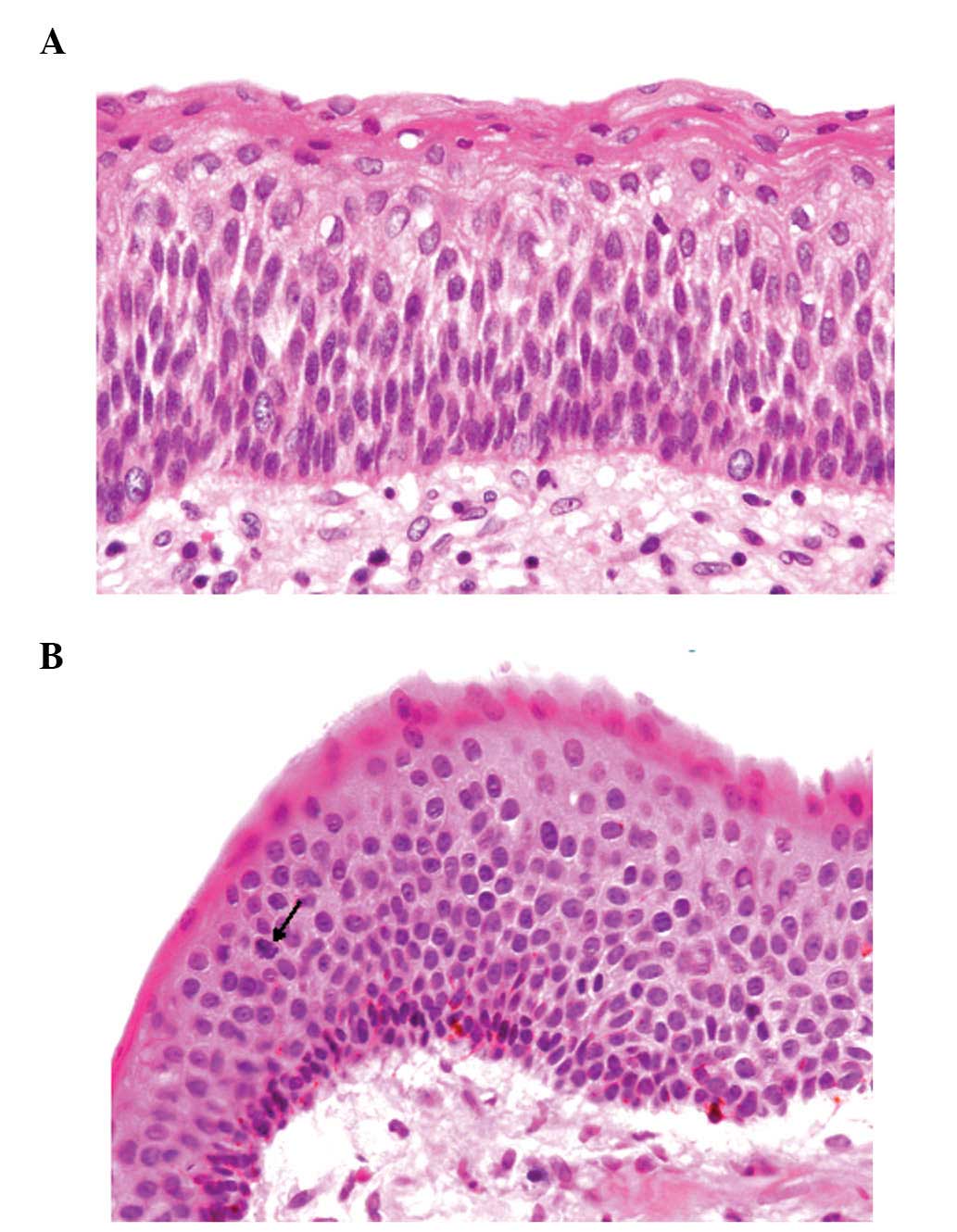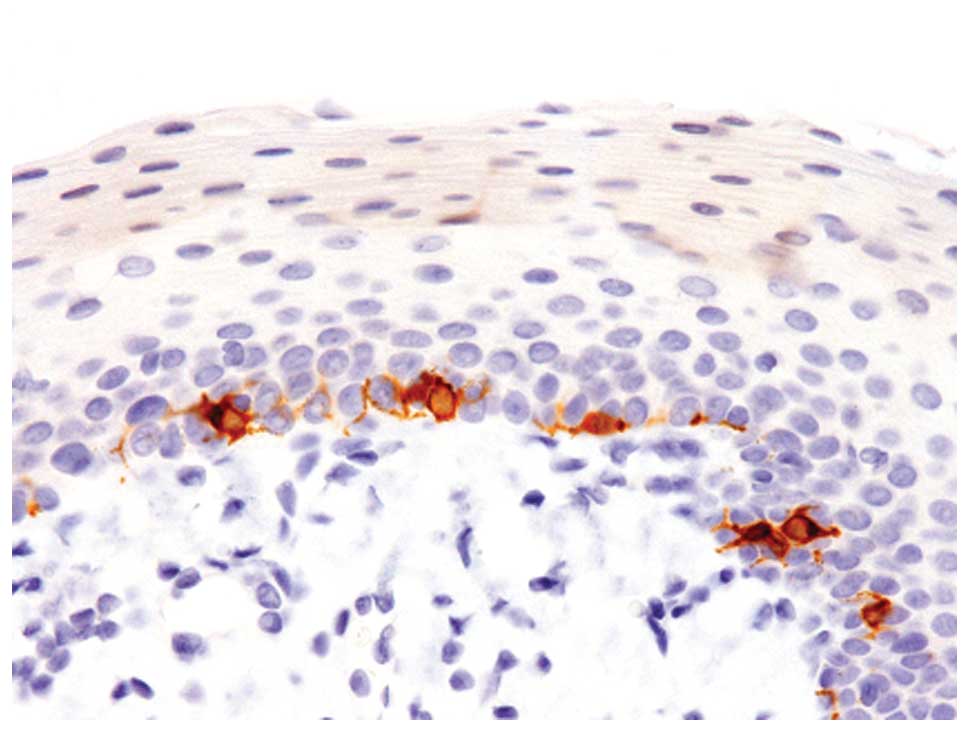Pigmented keratocystic odontogenic tumor: A case report with review of the literature
- Authors:
- Published online on: February 28, 2013 https://doi.org/10.3892/mco.2013.81
- Pages: 430-432
Metrics: Total
Views: 0 (Spandidos Publications: | PMC Statistics: )
Total PDF Downloads: 0 (Spandidos Publications: | PMC Statistics: )
Abstract
Keratocystic odontogenic tumor (KCOT) is a relatively rare benign neoplasm of odontogenic origin. The squamous epithelium of KCOT usually does not contain melanocytes, however, pigmented KCOT has been documented, albeit extremely rarely. In the present study, we described an additional case of pigmented KCOT and review the clinicopathological features of this extremely rare lesion. A 23-year-old Japanese female presented with a relatively well-circumscribed round unilocular radiolucency that impacted the third molar in her right mandibula. Surgical resection was performed subsequent to a clinical diagnosis of KCOT. Histopathological study of the resected mandibular cyst showed that it was covered by a parakeratinized stratified squamous epithelium, which had slightly enlarged hyperchromatic nuclei. On the luminal surface, a wavy layer of parakeratin was observed. In addition, dendritic melanocytes without atypia were observed in approximately half of the squamous epithelium. Immunohistochemical analyses revealed that these melanocytes were positive for S-100 protein, Melan-A and HMB-45. Therefore, a diagnosis of pigmented KCOT was made. Review of the clinicopathological features of the previously reported cases of pigmented KCOT as well as the present case revealed that: i) this lesion occurs mostly in young persons (average age, 18 years) and shows female predominance; ii) most cases are solitary and involve the mandibula; and iii) the reported incidence is 0.36‑10.6% and this difference may be associated with ethnicity. Thus, we described the ninth reported case of pigmented KCOT. The mechanism by which melanocytes appear and the difference in ethnic prevalence remain unclear. Additional clinicopathological studies are needed to clarify these issues.











